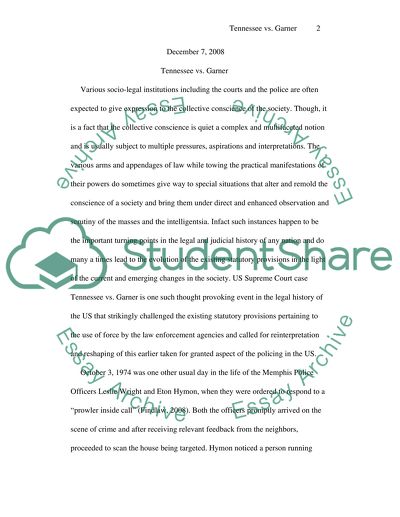U.S. Supreme Court Case Tennessee vs. Garner Study. Retrieved from https://studentshare.org/miscellaneous/1503387-us-supreme-court-case-tennessee-vs-garner
U.S. Supreme Court Case Tennessee Vs. Garner Study. https://studentshare.org/miscellaneous/1503387-us-supreme-court-case-tennessee-vs-garner.


